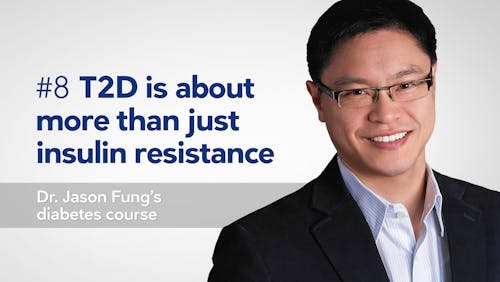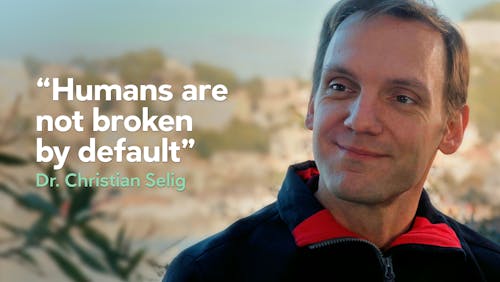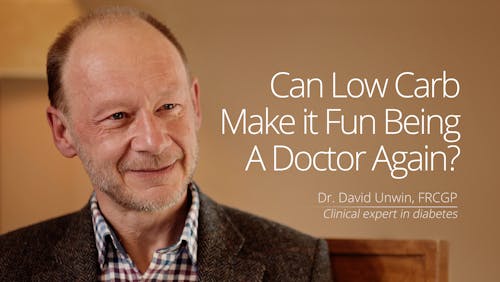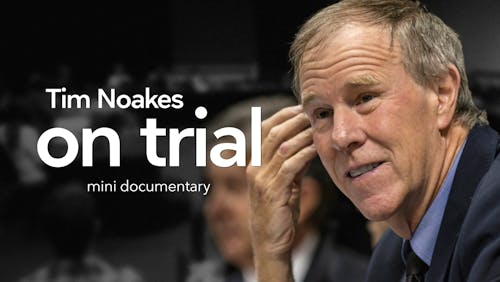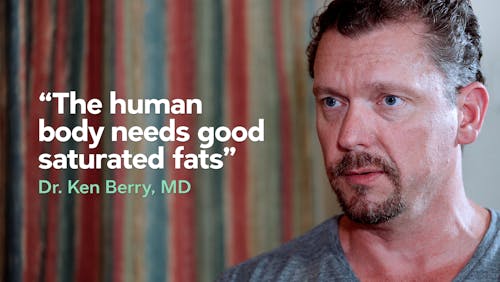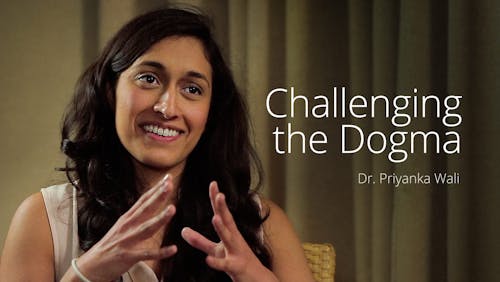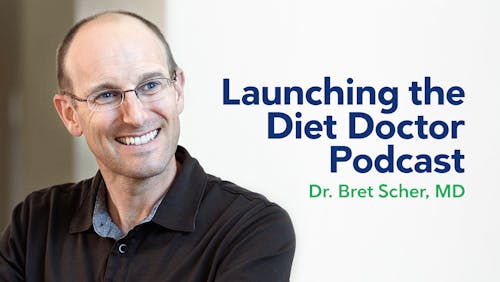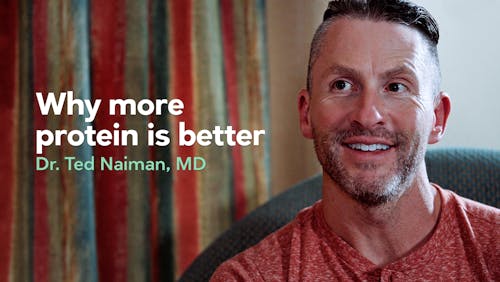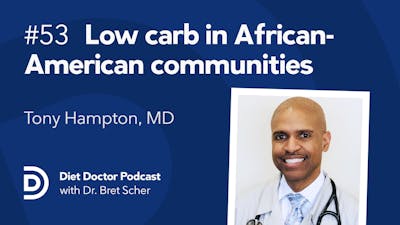Dr. Hampton: Making low carb simple in one office visit
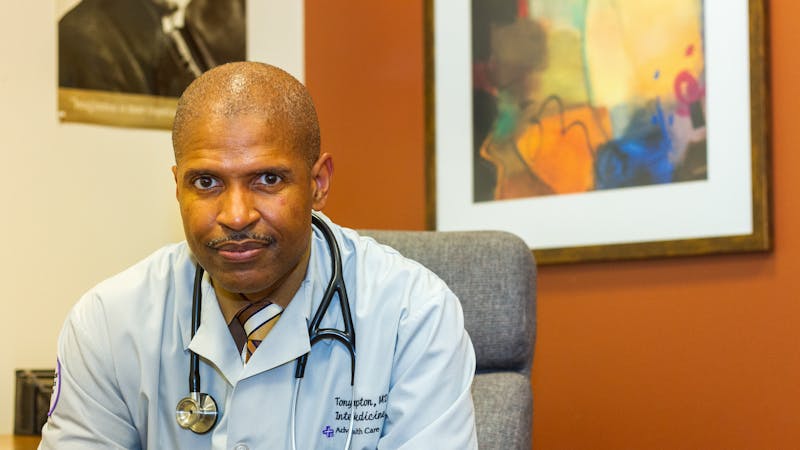
Dr. Tony Hampton is a family physician on the South Side of Chicago. He is writing a monthly column for Diet Doctor. This is his second column.
I try to make the low-carb diet as simple as possible for my patients. They don’t need to track macros, count calories, or test their blood sugar or ketones. They just need to eat whole, unprocessed low-carb foods.
And they don’t need to be perfect every day, they just need to keep going in the right direction.
I find that a simple approach is the best way to get patients on board at the start and then for them to achieve success over the long term.
Here’s how, in a single 15-minute office visit, I get a patient on his or her way with low-carb eating as quickly and as easily as possible. Learning about my approach may help you make your low-carb diet simpler, too.
Usually, the conversation starts with a natural opening, such as a test result that’s not so great or a symptom that’s bothering them. Maybe they feel tired, or their knees hurt, or we’re just looking at their lab results and their HbA1C or fasting glucose is much too high.
Start with what they’re currently eating
The first thing I ask is, “Are you willing to take a look at your lifestyle?” Almost all are willing.Then I ask them: “What did you eat yesterday? Tell me everything.” It’s a very rare person who’s already eating everything I want them to eat.
We start with breakfast. Often they’re eating cereal, or fruit and oatmeal, because they thought it was healthier and good for their cholesterol. Everybody is eating oatmeal, thinking that is the healthiest choice.
I ask them: “Would you be willing to eat bacon, sausage, and eggs in the morning, if I could convince you it won’t be bad for your weight or your cholesterol?” About 25% to 30% of patients are just elated and they say, “Yeah, I can do that!”
But others are worried. They’ve been so afraid of fat for so long they’re really apprehensive. Often they tell me they’ve been trying to cut back on their meat. I get that — I was a vegetarian for seven years so I tell them I know where they’re coming from.
But I say: “Let’s try it as an experiment for just three to six months. We have your labs, let’s see what happens if you eat bacon and eggs for breakfast instead of oatmeal and fruit.”
And usually, they’re willing to do that as an experiment. I tell them it’s not going to kill them in three to six months. Let’s just try and we’ll learn together.
Finding low-carb alternatives
We go through everything they typically eat and drink in a day that is high carb and we find a low-carb alternative. If they like tater tots [deep fried grated potato] I tell them about low-carb cauliflower tots.
If they love mac and cheese, I tell them about cauliflower mac and cheese and give them a recipe. If they’re drinking lots of sweet fizzy drinks, I get them to choose other drinks without sugar, like water, sparkling water, coffee, or tea.
What can they eat? I give them a patient handout with a list of low carb foods. I get them to pick six animal foods and 12 vegetables that they like. I get them to circle them on that list. Diet Doctor has a handy grocery list of low-carb foods that also works just as well to help you select your favorite foods.Almost everyone can find at least six animal proteins they like, such as pork chops, ground beef, sausages, ribs, eggs, and fish. The 12 vegetables might be a little harder for some. That’s OK. If they only like three or four vegetables, I tell them to just eat those.
Then I say, “At lunch and at dinner I want you to have one of the animal foods and two of the vegetables. Add a little butter, cheese sauce, or olive oil to the veggies and that’s it.”
Anticipating challenges
I tell them about the possibility of keto flu in the first week and that they will likely need to drink more fluids with electrolytes, like pickle juice or chicken broth with salt.
I also tell them that after a few days their hunger and cravings may reduce or even disappear. If they’re not hungry, they can feel free to miss a meal, such as breakfast.
“Isn’t breakfast the most important meal of the day?” they’ll ask, totally surprised.
Nope, I assure them, not if you have thousands of calories stored as fat on your body. “You can burn your own fat for your breakfast.” And they get it — some are even delighted at how much easier their hectic mornings will be.
Then I ask them, how confident are they are, on a scale of 1 to 10, that they can eat three meals with no snacks this way? Sometimes they are very confident. It’s so simple. They are good to go!
But sometimes they are not very confident at all. We explore why that is and what they can do to become more confident.
Sometimes it’s because they think it will be difficult getting a low-carb lunch on their job so we’ll talk about a few easy lunches for them to bring from home — for example, leftovers from the night before or hard-boiled eggs, some cheese, and some vegetable sticks. Even a MacDonald’s burger without the bun works great.
Or they are worried about temptations like the local donut shop, or the treats in the break room, and we will talk about how they can avoid those lures with other behaviors.
Or maybe they’re used to picking up takeout on the way home and can’t imagine cooking every night. We talk about how they could cook a big batch of something on Sunday and then another big batch of another dish on Wednesday and then they’ll have all their meals for the week.
The oven is your friend
I know that cooking every night can be hard. I tell them how I just stick things in the oven, with a lid on it so it doesn’t dry out, while I do other things. For example, I will put some sausages and vegetables in the oven and go work out for 40 minutes. They don’t have to be slaving over a stove top.
Whatever they think they might struggle with, we look for a simple solution they feel they will be able to do. We look at their life through their lens. When they see the possibilities they are really motivated to try.
Sometimes, especially when they have come asking me for a drug refill or a referral to a specialist for their health problem, they ask me why we just spent 15 minutes talking about their diet instead. I’ll tell them, “I will give you that refill or referral, but this diet is the only thing that is going to change your life.”
They leave the office with a list of foods to eat and not to eat. If they are on medications, especially diabetes drugs, I will adjust their dose right then, but also get them to follow up with me in a week. Others, not on medication, I might not see for a few months. But I tell every patient, if they find they are having any problems, follow up with me and we will sort it out.
I find that with that simple start, almost 80% of my patients do just fine.And the ones who struggle, it’s usually because there is some stress going on in their life. Their marriage is difficult; they are grieving because someone died; they’re unemployed or stressed by money or Covid.
When they come back to see me, we will dig more deeply into those issues and find solutions to help.
And in future columns, we will talk about those challenges and what to do, too. This is all part of my NEST and ROPE approach.
To recap, those letters in N.E.S.T. stand for Nutrition, Exercise, Sleep (more)/Stress (less); Thinking/Trauma. In R.O.P.E they stand for Relationships, Organisms, Pollutants, and Emotions. As I say, you use your ROPE to get to your NEST. My podcast is called “Protecting your NEST.”
Try this super simple approach. Until next time, remember to always protect your NEST.
